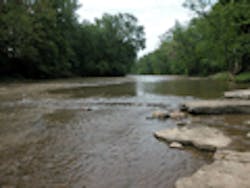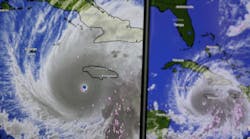Ohio EPA Urges Better Storm Water Control for River Watershed
Improved storm water control measures and construction practices are chief among recommendations the Ohio Environmental Protection Agency has made for the lower portion of the Olentangy River watershed after an extensive water quality study.
The mainstem of the river is 93 miles long from its headwaters in Crawford and Morrow counties to downtown Columbus, where it joins with the Scioto River. This is the first time the entire watershed was surveyed; 74 sites were sampled in 2003 and 2004 for this report.
The Olentangy River watershed, including Whetstone Creek the river's largest tributary, is located in central Ohio. It encompasses portions of Crawford, Delaware, Franklin, Morrow and Marion counties.
The sampling done for this assessment is part of a larger process for cleaning up water bodies in the state, that determines the Total Maximum Daily Load (TMDL) a waterbody can handle before it is considered impaired.
The TMDL process will improve the quality of an impaired stream by taking a comprehensive look at all pollution sources, the Ohio EPA said. About 46 percent of the entire watershed meets aquatic life water quality standards, about 31 percent partially meets the standards, and 23 percent does not meet them at all.
In the developed lower watershed, south of the Delaware Reservoir, impacts are generally due to urbanization pressures, failing on-site home wastewater treatment systems, sanitary sewer and combined sewer overflows, and dams.
In this area of the watershed, the Ohio EPA recommends focusing on enhanced storm water control, better construction practices, addressing sanitary and combined sewer overflows, obtaining conservation sements, and increased dam removal.
Impacts to the watershed in the more rural area north of the Delaware Reservoir are from high-intensity agricultural practices, failing on-site home wastewater treatment systems, insufficiently treated wastewater and separate sewer overflows from the city of Galion, and small villages and unincorporated areas without centralized wastewater treatment or collection.
Ohio EPA recommends improved or best management practices in the upper portion of the watershed for activities often associated with agriculture such as reducing vegetation removal along the river and alternatives to channel deepening and widening.
Source: Ohio EPA


